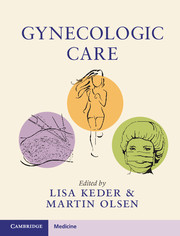Book contents
6 - Diagnostic Laparoscopy
from Section 2 - Gynecologic Surgery
Published online by Cambridge University Press: 01 February 2018
Summary
Introduction
Modern “endoscopy” is relatively young, but the concept of looking inside body cavities to diagnose ailments is an ancient concept. Its development was truly limited by entry and cavity expansion techniques, illumination of interior spaces, and technological development of instrumentation to enhance visualization. In order to understand the current status of these tremendously valuable techniques, it is important to review its origins and progress over time.
Evidence from more than 3,500 years suggests that ancient Egyptians had tried to develop techniques to look into the body to discover what was causing problems and to reveal disease processes. This curiosity never stopped. The Chinese in 1600 BC introduced catheters as a means of collecting samples and furthering diagnostic techniques. Indian medical treatises dating back to 600 BC show evidence of the development of speculum-like devices to look into the inner ear, nostrils, and other cavities. The Romans and Greeks also made contributions. Hippocrates is thought to be the father of “minimally invasive” medical application. He was also able to describe some of the earliest endoscopic procedures circa 400 BC in his publication The Art of Medicine which describes utilization of speculums and instruments to cure anal rectal hemorrhoids (1, 2).
Abdominal entry was a little more delicate issue and was not really described until much later in history. In 40–50 BC the Greeks again pushed the issue by proceeding to utilize abdominal surgical procedures to address digestive concerns. The incisions got smaller and smaller and surgeons eventually turned to the umbilicus to achieve visualization into the abdomen utilizing specially designed catheters inserted with speculums specifically designed to insert the catheters. These historic sources sound somewhat similar to current techniques (3).
While such procedures allowed for sampling of abdominal contents, direct visualization was still limited by cavity expansion and illumination. Early pioneers utilized candles and mirrors to assist in solving these issues. However, it was a surgeon from Cordoba, Spain, who changed surgery permanently. Abu-al-Qasim was one of the greatest surgeons and philosopher-scientists of the pre-modern era (936–1013 CE). His innovations served as foundational for surgical principles throughout Europe and Eurasia. Al-Qasim's contributions included his 30-volume medical encyclopedia Al-Tasrif (The Method) which clearly describes many more modern surgical techniques including endoscopic procedures and revolutionary instrumentation such as cannulas and grooved needles.
- Type
- Chapter
- Information
- Gynecologic Care , pp. 50 - 57Publisher: Cambridge University PressPrint publication year: 2018



